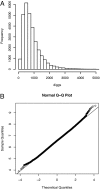Novelty and collective attention
- PMID: 17962416
- PMCID: PMC2077036
- DOI: 10.1073/pnas.0704916104
Novelty and collective attention
Abstract
The subject of collective attention is central to an information age where millions of people are inundated with daily messages. It is thus of interest to understand how attention to novel items propagates and eventually fades among large populations. We have analyzed the dynamics of collective attention among 1 million users of an interactive web site, digg.com, devoted to thousands of novel news stories. The observations can be described by a dynamical model characterized by a single novelty factor. Our measurements indicate that novelty within groups decays with a stretched-exponential law, suggesting the existence of a natural time scale over which attention fades.
Conflict of interest statement
The authors declare no conflict of interest.
Figures



References
-
- Kahneman D. Attention and Effort. Englewood Cliffs, NJ: Prentice Hall; 1973.
-
- Pashler HE. The Psychology of Attention. Cambridge, MA: MIT Press; 1998.
-
- Pieters FGM, Rosbergen E, Wedel M. J Marketing Res. 1999;36:424–438.
-
- Dukas R. Brain Behav Evol. 2004;63:197–210. - PubMed
-
- Reis RI. J Monetary Econ. 2006;53:1761–1800.
MeSH terms
LinkOut - more resources
Full Text Sources
Other Literature Sources

